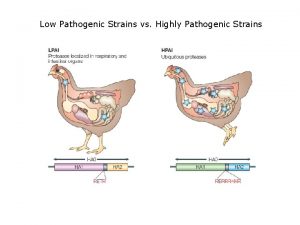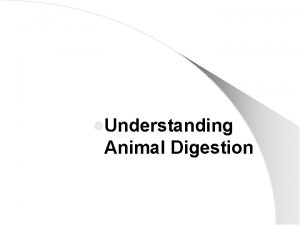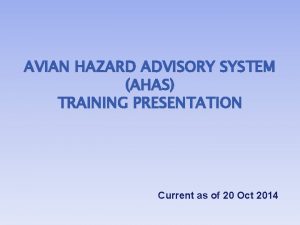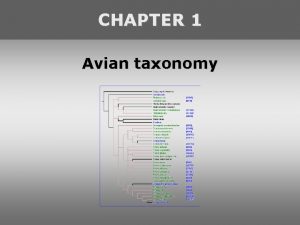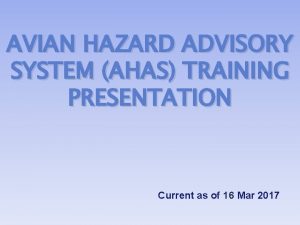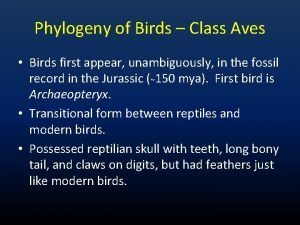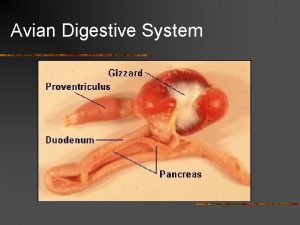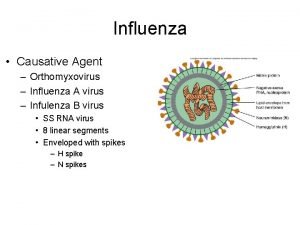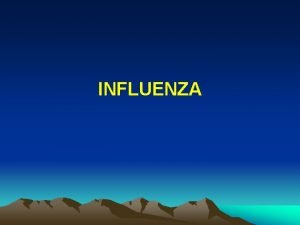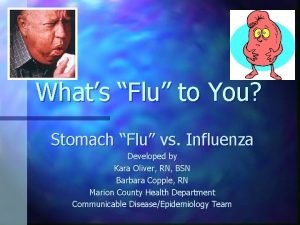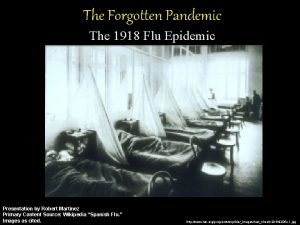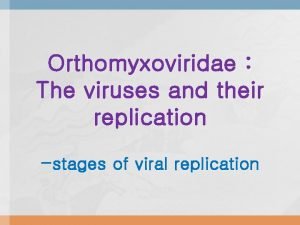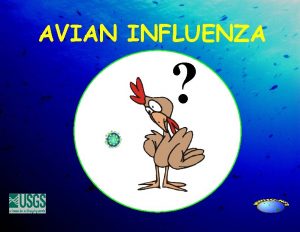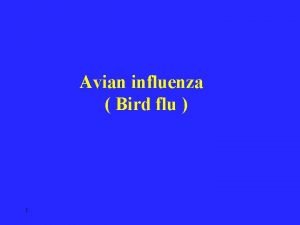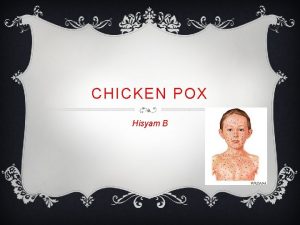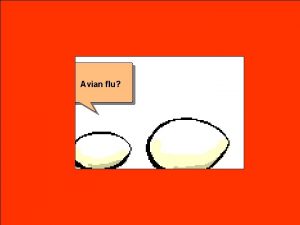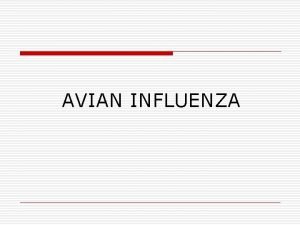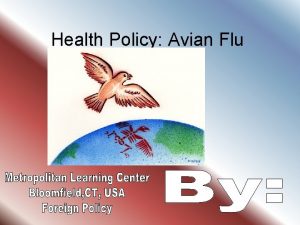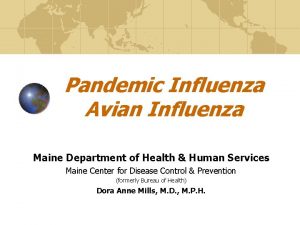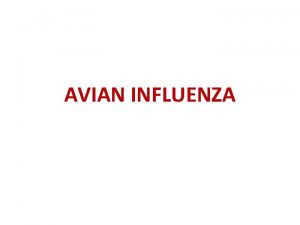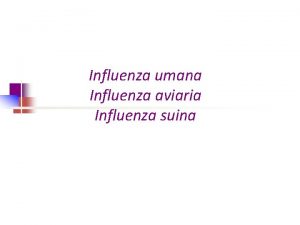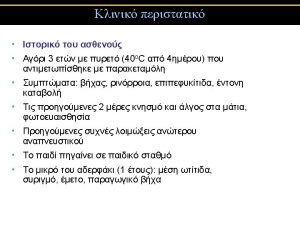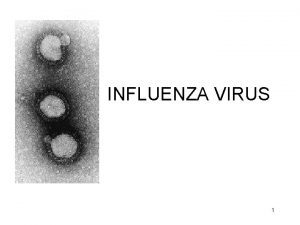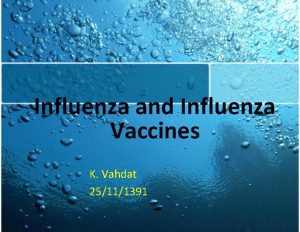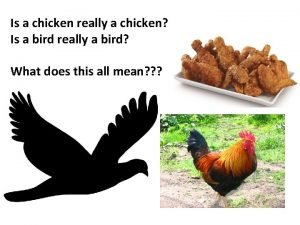AVIAN INFLUENZA CHICKEN FLAVOR Avian Influenza AI it



















- Slides: 19

AVIAN INFLUENZA (= CHICKEN FLAVOR)

Avian Influenza (AI), it is an international problem. Situated in the list is A disease in the OIE.

Factor Orthomyxoviridae, Influenza A virus Influenza viruses are divided into three groups A, B and C. Group A includes factors responsible for the disease in the wing AI viruses low pathogenic viruses (LPAI) mid-pathogenic viruses (the MPAA) high pathogenic viruses (HPAI) Typing of AI viruses Hemagglutinin antigen (HA: 1 -15) Neuraminidase antigen (NA; 1 -9)

Epidemiology First described in chickens in Italy in 1878 The first isolation in the hindi was made in North America in 1963 Information on the ecology of poultry influenza viruses has been well understood since the 1970 s

Pathogenicity H 5 and H 7 subtypes have been effective in serious epidemics that have been seen to date. Pennsylvania-Virginia-New Jersey (1983 -84) H 5 N 2 Italy (1999 -2002) H 7 N 1 Holland-Belgium (2002 - ) H 7 N 7 The pathogenicity of AI virus strains is widely distributed There is a high frequency of antigenic change between AI viruses The isolation of HPAI viruses from outbreaks seen in different countries in chickens is not very intense and usually LPAI viruses are isolated

Host distribution Poultry, human, horse, pig, seal, whale, mink Between the wings; turkey, chicken, duck-goose, quail, ostrich pheasant, lamb chick, seagull, partridge, sea birds, marsh birds budgerigar, peacock, parrot

Spread of virus and sources of contamination Migratory water birds are defined as virus reserves.

Infection Direct contact with disease-affected water birds (open-fed wings) Infected wings Base Movement of contaminant equipment between poultry People in contact with contaminant material and infected poultry (especially with fertilizer) Live poultry markets Usually AI birds will spread the virus around for two weeks and the virus will not usually be detected after 4 weeks.

The susceptibility of the agent to chemical substances Oil solvents (detergents) Formalin Beta-propiolactone Oxidising agents acids ether Sodium desoxycholate SDS Ammonium salts

Resistance to physical conditions The virus stays alive for long periods, especially in cold and humid environments (about 105 days) 30 -35 days at 4 ° C and 7 days at 20 ° C In environmental environments, viruses can be isolated from lakes and ponds, especially where water birds are present, and protect the causative infectivity for a certain period of migration

In humans AI In humans, until 1997 H 1, H 2, H 3 After this year (Hong Kong, 1997) H 5 N 1 Finally, H 9 N 2 infection has been reported

Diagnosis The incubation period can range from a few hours to 3 days and up to 14 days individually Morbitide high Mortality can range from negligible to 100% Clinical findings are highly variable from subclinic to mild respiratory tract infections and multiply acute generalized form In some cases, the disease is so rapid that death can occur without any clinical symptoms

Severe depression, diminished activity, decreased feed intake, attenuation Congregation at puberty, head and neck edema, hairless cyanosis Respiratory system indications: cough, sneeze, nasal discharge, respiratory sounds, excessive lacrimation, Neurological manifestations Decrease in egg production Diarrhea

Macroscopic findings In sinus, catarrhal, fibrinous, serofibrinous, mucopurulent, or caseous inflammation is observed Exercise ranging from serous to treacherous The airways are thickened and fibrinous and caseinous exudate. peritonitis Especially in the populations of the colon and / or intestine with catharral / fibrinous enteritis Oviduct exudate In the case of HPAI virus infections, any macroscopic finding may not develop due to sudden death.

Commonly seen lesions, The sympathies are swollen and edematous head, zionitic, hemorrhagic beards and twigs Congestion and haemorrhage can also be seen in stools As the disease progresses, necrotic foci are frequently encountered in internal organs (liver, spleen, kidney and lung).

Isolation and identification Materiel Dead or live wings Viscera Cloacal and / or trecheal swabs Swabs in sterile transport fluid containing antibiotics Organs are shipped in sterile plastic tubes or bags. Organs of the digestive system and other organs should be sent separately. The receiving organs should be delivered to the laboratory at 4 C within 48 hours.

Virus isolation Embryo hen egg (All strains are found in ETY 9 -11 days) DK (CEF, MDCK) Inoculation to the experimental animal (Chicken, turkey, duck)

Virus identification HA HI (Type A NP, MP diagnosis) (HA, NA; identification of subtypes) Pathogenicity tests (IVPI)

Serology Detection of presence of antibodies should be done at earliest 7 -10 days AGP ELISA VN
 Low pathogenic avian influenza
Low pathogenic avian influenza Dispersal definition
Dispersal definition Polygastric examples
Polygastric examples Ahas bird condition
Ahas bird condition Aves taxonomy
Aves taxonomy Avian taxonomy
Avian taxonomy Bash ahas
Bash ahas Dinosauria
Dinosauria Porter novelli healthstyles survey
Porter novelli healthstyles survey Avian digestive system
Avian digestive system Precipitancy creates prodigality
Precipitancy creates prodigality Causative agent of influenza is
Causative agent of influenza is Influenza
Influenza Influenza vaccine dosage chart 2019-2020
Influenza vaccine dosage chart 2019-2020 Stomach flu vs influenza
Stomach flu vs influenza The great influenza rhetorical analysis
The great influenza rhetorical analysis Influenza ww1
Influenza ww1 Is influenza a airborne disease
Is influenza a airborne disease Albert osterhaus
Albert osterhaus Influenza virus replication
Influenza virus replication
